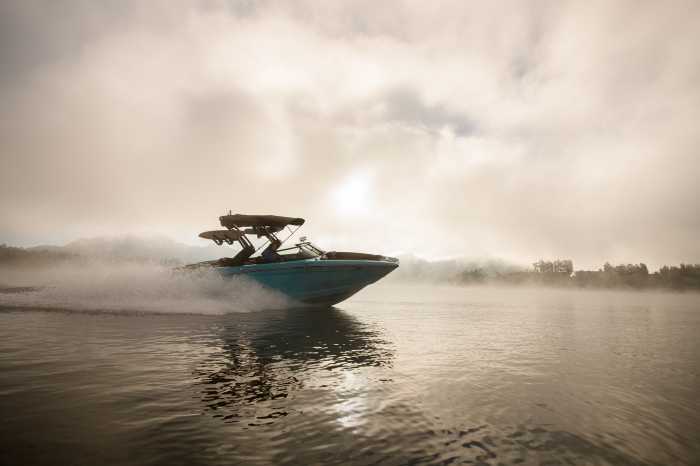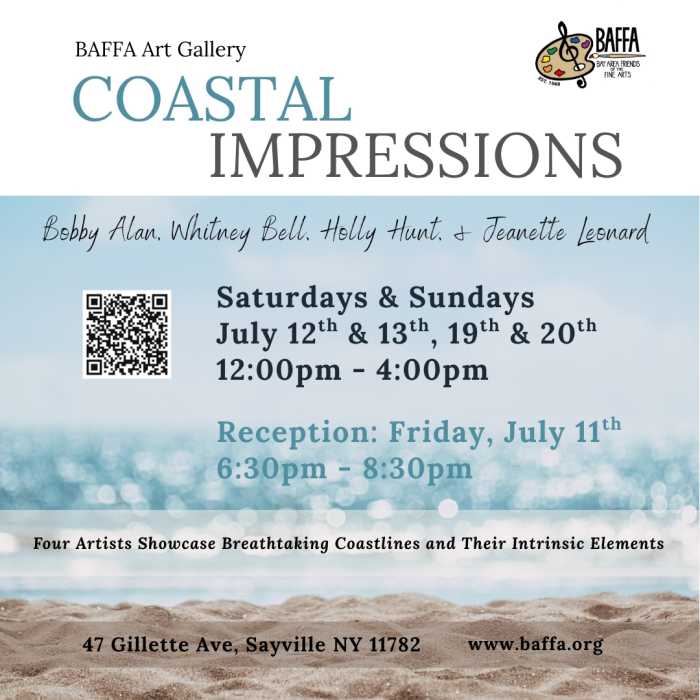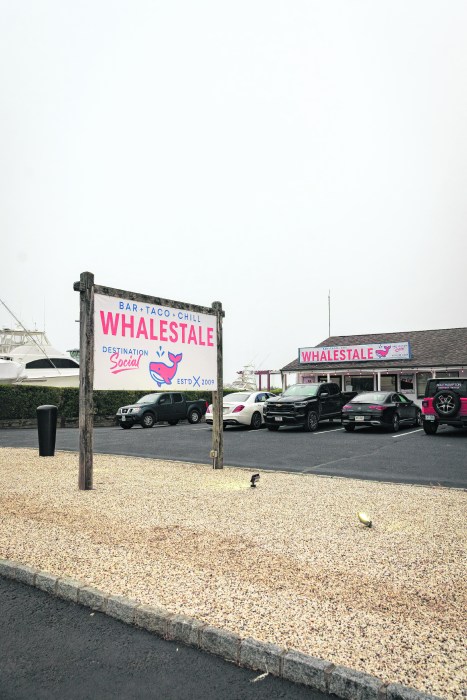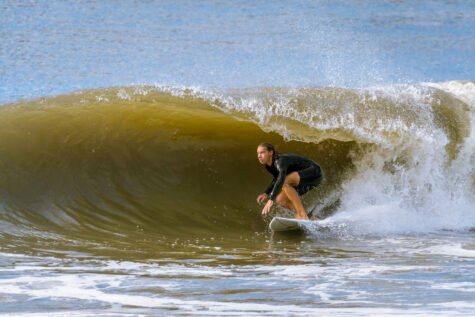
By Robert Sherman ~ When I came to New York for grad school I knew nothing about the Long Island surf scene. I grew up surfing in Northern California. So when I went to college in Boston I took up windsurfing because I was too far away from the waves, and not standing sideways on a board while gliding across water was simply not okay with me.
In 1995, when I first rented a house on Fire Island I was still pretty clueless. On the first day here I walked from the east end of Seaview to the jetties in Ocean Beach. When I saw the setup there I couldn’t believe my eyes. I ran back to the house, searched the Yellow Pages for a nearby surf shop, grabbed my wallet and car keys and got on the next ferry. Three hours later I came back with my first East Coast surfboard. I immediately paddled out to join the few surfers, roughly my age, taking turns on the long peeling waves lining up on the sandbar out front of the east jetty. Back then the waves connected from the bars all the way to the beach – a rare occurrence these days.As it turns out, the surf here is relatively inconsistent. Where places like Long Beach and Gilgo Beach may see 300 days a year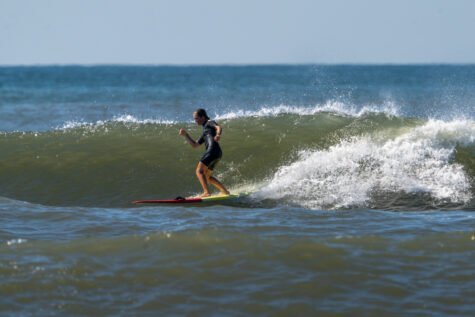 with rideable waves, Fire Island most often hovers around 150. The seasonally fluctuating sandbars are often too deep, and theyhave a deep water channel in front of them. This makes for shorter rides and less frequent sessions (mostly at low tide when the water is shallow enough for the waves to break properly). And the jetties only sometimes hold the sand’s bottom contours necessary for the waves to be surfable.All the requisite conditions aren’t locked in like they are at mainland breaks such as the reef at Ditch Plains, Montauk, or the multiple jetty systems in the Rockaways. The sand comes and goes here.Storms from the southeast cut away beach and the sand slips back into the water to fill in the bars – we like that but it makes the homeowners nervous. Then the storms from the southwest push the sand back up onto the beach – homeowners are now happy while us surfers are left high and dry. The dredging of the sandbars to replenish the beach usually kills the surf for a couple of
with rideable waves, Fire Island most often hovers around 150. The seasonally fluctuating sandbars are often too deep, and theyhave a deep water channel in front of them. This makes for shorter rides and less frequent sessions (mostly at low tide when the water is shallow enough for the waves to break properly). And the jetties only sometimes hold the sand’s bottom contours necessary for the waves to be surfable.All the requisite conditions aren’t locked in like they are at mainland breaks such as the reef at Ditch Plains, Montauk, or the multiple jetty systems in the Rockaways. The sand comes and goes here.Storms from the southeast cut away beach and the sand slips back into the water to fill in the bars – we like that but it makes the homeowners nervous. Then the storms from the southwest push the sand back up onto the beach – homeowners are now happy while us surfers are left high and dry. The dredging of the sandbars to replenish the beach usually kills the surf for a couple of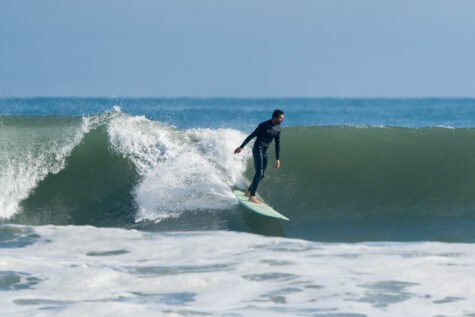 summers until all that sand slides back into its natural ebb and flow state with each individual storm.So there has been doldrum summers here, as well as glorious stretches when one can find fantastic surf breaks on all the sandbars, and the jetties start to “party like it’s 1999!”The fickle surf, plus the commitment of a ferry ride, keeps the crew here quite local, tightly knit, and super friendly. That part of the equation is amazing and unique to Fire Island. Other beaches see crowds in the hundreds vying for the same waves. Here a packed day in any given lineup is maybe seven to 10 people. And if that’s too many then just paddle over to the next sandbar.So for the more frequent unrideable days, the best kept secret feel of this island makes up for it all. And, by the way, when the surf does get good here it’s truly spectacular. Oh, by the way, please don’t tell anyone about any of this.But this is a photography column and I got distracted. So, for the sandbar sessions I use a 200-600mm zoom with a 1.4 teleconverter. Tripods are a must. I set my camera to multi shot, lock on, wide tracking autofocus. And I never shoot slower than ss1/2000, unless I’m looking for motion blur or panning shots. Surf photography for me is almost as satisfying as surfing, as in some sweet way it keeps me gliding across the water.Follow Fire Island News on Instagram @fireislandnews
summers until all that sand slides back into its natural ebb and flow state with each individual storm.So there has been doldrum summers here, as well as glorious stretches when one can find fantastic surf breaks on all the sandbars, and the jetties start to “party like it’s 1999!”The fickle surf, plus the commitment of a ferry ride, keeps the crew here quite local, tightly knit, and super friendly. That part of the equation is amazing and unique to Fire Island. Other beaches see crowds in the hundreds vying for the same waves. Here a packed day in any given lineup is maybe seven to 10 people. And if that’s too many then just paddle over to the next sandbar.So for the more frequent unrideable days, the best kept secret feel of this island makes up for it all. And, by the way, when the surf does get good here it’s truly spectacular. Oh, by the way, please don’t tell anyone about any of this.But this is a photography column and I got distracted. So, for the sandbar sessions I use a 200-600mm zoom with a 1.4 teleconverter. Tripods are a must. I set my camera to multi shot, lock on, wide tracking autofocus. And I never shoot slower than ss1/2000, unless I’m looking for motion blur or panning shots. Surf photography for me is almost as satisfying as surfing, as in some sweet way it keeps me gliding across the water.Follow Fire Island News on Instagram @fireislandnews



